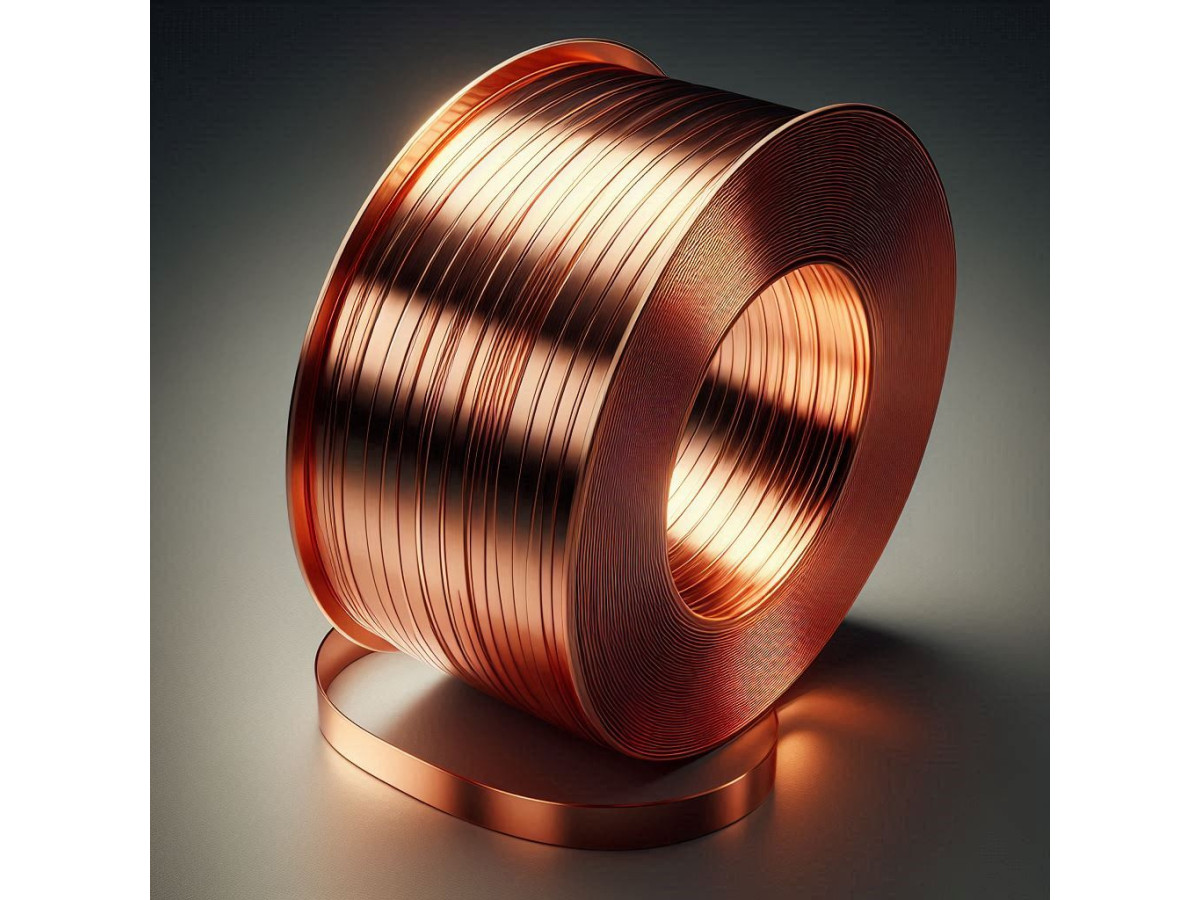When purchasing copper tape, it is important to understand the marking to obtain a material with the necessary characteristics for a specific application. This guide will help clarify the designations and make the right choice when ordering.
The marking of copper tape includes important information about its composition, physical state, dimensions, and compliance with current standards. The main document regulating the production of copper tape in Russia is GOST 1173-2006. According to this standard, the marking contains several key parameters, such as the type of copper, mechanical characteristics, thickness, and width of the tape, as well as information about its use in various industries. This data helps consumers assess the suitability of the material for specific needs and guarantees its high quality.
What to Pay Attention To?
First of all, let’s focus on the letter designation of the copper grade. The most common grades of copper tape are:
- M0 – the highest degree of purity, copper content 99.95%.
- M1 – high purity, copper content 99.90%.
- M2 – copper content 99.70%.
- M3 – copper content 99.50%.
- M1r – deoxidized high-purity copper.
- M1f – phosphorus-containing high-purity copper.
The next important parameter is the material state. It is designated by letters following the numerical index:
- soft (M) – soft state.
- semi-hard (PT) – semi-hard state.
- hard (T) – hard state.
After indicating the state, the marking includes dimensional characteristics: thickness, width, and length of the tape in millimeters. For example, the designation "M1 0.8x300" indicates a tape made of M1 copper, 0.8 mm thick and 300 mm wide.
Particular attention should be paid to manufacturing accuracy. In the marking, it is designated by letters: normal accuracy – N, increased – P, high – V. This parameter is critically important for use in precision engineering and electronics.
How to Choose the Material?
When selecting copper tape, it is important to consider the specific requirements of its application. In the electrical industry, tapes of grades M0 and M1 in soft state are usually preferred, as they have high electrical conductivity and good formability, making them ideal for manufacturing wires and contacts. In instrumentation, tapes of increased accuracy of grade M1f in hard state are often used, as they provide dimensional stability and high strength, which is critical for creating high-precision and reliable components.
These characteristics allow for optimal adaptation of copper tapes to various technological processes and operating conditions.
It is important to understand that misinterpretation of the marking can lead to serious problems when using the material. For example, if a hard tape is ordered instead of a soft one, there may be difficulties in assembly and forming. Using a tape of normal accuracy instead of increased accuracy can lead to issues in the performance of the finished product.
When ordering copper tape, it is necessary to check quality certificates and compliance of stated characteristics with actual ones. Reliable suppliers always provide a complete package of documentation, including data on the chemical composition and mechanical properties of the material.
Separate attention should be paid to the packaging marking. It should indicate: the manufacturer, material grade, dimensions, batch number, and manufacturing date. This information helps track the origin of the material and ensures its proper storage and use.
How to Order the Material Correctly?
For effective work with suppliers, it is recommended to compile a clear list of requirements for the ordered copper tape. This should include:
- Indication of a specific copper grade (e.g., M1, M2) to ensure the material meets the necessary properties and characteristics.
- Definition of the material state (soft, semi-hard, or hard) is important for subsequent processing and application of the tape.
- Indication of exact dimensions (width, thickness) with permissible deviations ensures compliance of the tape with required parameters and its usability in specific products.
- Definition of the manufacturing accuracy level (e.g., accuracy class) guarantees compliance of the tape with specified geometric parameters.
- Indication of special surface requirements (e.g., roughness, absence of defects) allows for obtaining a tape ready for further processing or use without additional preparation.
- Requirement for providing relevant quality certificates and other documentation confirms the material's compliance with established standards and regulations.
When in doubt about the correctness of the choice, it is always better to consult with the technical specialists of the supplier. They will help select the optimal variant of copper tape for a specific application and ensure the correct understanding of the marking.

